Table of Contents
In this article, we’re discussing fanless laptops and silent Windows ultrabooks and Chromebooks, or in other words, laptops with passive cooling solutions, without a fan that spins and makes noise.
You’ll find quite a few different laptops without a fan available in stores, and we’ll list them all based on screen size, weight, the hardware inside, and their pricing. We’ll also cover what we consider to be the best fanless designs available at the time of this update, and explain why we made those choices based on our reviews and experience.
Now, there’s one obvious reason why you’ll want a fanless laptop: it’s going to be noiseless and completely silent, especially as the passively cooled hardware is also paired with quiet SSD storage in most units. Older fanless machines, especially among the more affordable options, used to come with spinning HDDs, but even those could be upgraded in order to deliver what the fanless consumers desire: a quiet laptop experience, similar to what you’re getting with tablets or phones.
But there are a few other reasons, such as the fact that fanless designs are normally thin and lightweight as well, thus excellent for traveling and lugging around every day to work or school, plus the fact that without any moving parts inside, you won’t have to concern yourselves with vibrations or anything that can negatively impact your daily-use experience with the device.
At the same time, it’s important to understand that the majority of fanless laptops available these days are built on lower-power hardware platforms compared to the actively-cooled designs. So while the modern options can handle everyday tasks just fine, these fanless computers are not meant for serious multitasking or the more demanding chores you might want to perform on a modern laptop (editing videos and photos, gaming, running programming software, etc.). But there are some exceptions to the rule, with the newer hardware platforms, as you’ll see in a bit.
On top of that, you’ll also have to be aware of the two major classes of fanless laptops available in stores: premium designs, such as MacBook Airs or the Surface Pro X or the Lenovo ThinkPad X1 Fold, and affordable options available in various sizes, from mini-laptops such as the Asus L210 up to 15 and 17-inch all-around models from Dell or HP. We’ll discuss them all further down.
We’ll also talk a bit more about the fanless hardware platforms available at this very moment, towards the end of the post, so you’ll understand exactly what to expect from each of them. In a few words though, if you’re reading this article in 2023 or later, Intel Celeron/Pentium specs are the ones to get if you’re shopping on a budget, with some premium fanless Intel Core models and especially a handful of newer ARM-based implementations in the higher-tier products, either Chromebooks or fully fledged laptops running macOS or Windows.
For now, these are the available fanless laptops and ultra-portables. Click the links on each product’s name for more details and reviews, as well as the links in the Price column for the latest offers and discounts on the ones that you’re interested in.
Going with a fanless laptop normally translates into a compromise in performance and/or thermals. These options here are, however, pretty much the best money can get you in a fanless and completely silent product.
They’re very different between the various models, and I’d suggest further research to understand which is the right choice for you. You’ll find a couple of older Core devices running either Windows or ChromeOS, a couple of premium ARM-based devices running the ARM-version of Windows and compatible apps, you’ll find the excellent MacBook Air M1 and M2 running MacOS, as well as a few Windows laptops built on powerful Intel Core U hardware, such as the Huawei Matebook X and the ThinkPad X1 Fold.
If you’re willing to spend around 700-800 USD/EUR or your local equivalent on this sort of premium fanless laptop, the excellently balanced and long-lasting Apple MacBook Air M1 built on Apple silicon is still one of the go-to options in this segment, as significantly more affordable than the newer Air 13-inch M2/M3, and more powerful than the very few available Windows options with similar capabilities, such as the portable Huawei MateBook X (reviewed here).
Other options to consider in the Windows space are the Dell XPS 13 2-in-1 and the Microsoft Surface Pro 7/7+, even if these are rather old these days. These Surface tablets are fanless in their Core i3/i5 configurations. Those are older generations Intel platforms, but should still do fine for everyday use and daily multitasking. The newer Surface models are no longer fanless in any configurations.
This aside, on the more budget-friendly side, Chuwi makes a few interesting laptops without fans, built on low-power platforms and with small batteries, but otherwise with beautiful screens and premium designs. They’re worth a look, just make sure you buy them from stores with good warranty services and return policies. Update: Make sure to double check this, as some of the more recent Chuwi updates are no longer fanless, while previous generations were. See the comments section for details.
Furthermore, the Microsoft Surface Pro X and the Lenovo ThinkPad X13s are interesting options as well, as ARM-based Windows devices, just make sure you’re OK with the strong points and the quirks associated with the still finicky ARM-Windows duo.
| Model | Type | Screen | Hardware | Weight | Price |
| Acer Swift 7 | Windows, clamshell | 14.0″ IPS FHD touch | Amber Lake Core Y, 32 Wh | .9 kg / 2 lbs | $1599 |
| Apple MacBook Air M1 | MacOS, clamshell | 13.3″ IPS retina glossy | Apple M1, 49.9 Wh | 1.29 kg / 2.7 lbs | $899 |
| Apple MacBook Air 13 M2 | MacOS, clamshell | 13.6″ IPS retina wide-gamut | Apple M2, 52.6 Wh | 1.24 kg / 2.7 lbs | $1099 |
| Apple MacBook Air 15 M2 | MacOS, clamshell | 15.3″ IPS retina wide-gamut | Apple M2, 66.5 Wh | 1.5 kg / 3.3 lbs | $1299 |
| Asus Chromebook Flip C434 | Chromebook, convertible | 14″ IPS FHD touch | Amber Lake Core Y, 48 Wh | 1.45 kg / 3.2 lbs | $479 |
| Asus NovaGo | Windows on ARM, clamshell | 13.3″ IPS FHD touch | Qualcomm 845, 52 Wh | 1.4 kg / 3.1 lbs | $999 |
| Chuwi MiniBook X | Windows, convertible | 10.6″ IPS FHD+ touch | Alder Lake Pentium, 29 Wh | .92 kg / 2 lbs | $399 |
| Chuwi CoreBook X | Windows, clamshell | 14.0″ IPS 3:2 2K | Alder Lake Core i5 U, 46Wh | 1.36 kg / 3 lbs | $599 |
| Dell XPS 13 2-in-1 | Windows, tablet + folio | 13″ 3.2K IPS touch | Alder Lake Core U, 49.5 Wh | .76 kg / 1.6 lbs, plus keyboard |
$999 |
| Google Pixelbook | Chromebook, convertible | 12.3″ IPS 3:2 3K touch | Amber Lake Core Y, 48 Wh | 1.13 kg / 2.5 lbs | $799 |
| Google Pixelbook Go | Chromebook, clamshell | 13.3″ IPS 16:10 FHD touch | Amber Lake Core Y, 48 Wh | 1.1 kg / 2.4 lbs | $649 |
| HP Spectre Folio | Windows, tablet w/ folio | 13.3″ IPS FHD touch | Amber Lake Core Y, 55 Wh | 3.3 lbs / 1.5 kg | $1199 |
| Huawei MateBook X | Windows, clamshell | 13″ IPS 3:2 3K touch | Comet Lake Core U, 42 Wh | 2.2 lbs / 1 kg | $999 |
| Lenovo ThinkPad X13s Snapdragon | Windows on ARM, clamshell | 13.3″ 16:10 IPS matte | Qualcomm Snapdragon 8cx, 49 Wh | 1.06 kg / 2.35 lbs | $1099 |
| Lenovo ThinkPad X1 Fold | foldable laptop | 16″ OLD 2K+ touch | Intel Core U, 48+16 Wh | 3.8 lbs / 1.8 kg | $2499 |
| Microsoft Surface Pro 7 , 7+ | tablet + folio | 12.3″ IPS 2.7K touch | Intel Core i3 or i5 – 11th gen, 47.4 Wh | 0.77 kg / 1.7 lbs (without keyboard) |
$799 |
| Microsoft Surface Pro X | Windows on ARM, tablet | 13″ IPS 3:2 3K touch | Qualcomm Snapdragon SQ1 or SQ2, 34 Wh | .78 lbs / 1.7 kg | $899 |
| Porsche Design Ultra One | Windows, clamshell | 15.6″ IPS FHD touch | Amber Lake Core Y, 45 Wh | 3.3 lbs / 1.5 kg | $1399 |
| Samsung Galaxy Chromebook | Chromebook, convertible | 13.3″ OLED 4K touch | Core U, 49 Wh | 1 kg / 2.2 lbs | $799 |
| Samsung Galaxy Pro S | Windows, clamshell | 13.3″ IPS FHD touch | Lakefield Core, 42 Wh | .95 lbs / 2.1 kg | $999 |
| Samsung Galaxy Pro S ARM | Windows on ARM, clamshell | 13.3″ IPS FHD touch | Qualcomm 8cx, 42 Wh | .95 lbs / 2.1 kg | $999 |
| Venom BlackBook Zero 14 | clamshell, clamshell | 14″ IPS FHD matte | Amber Lake Core Y, 36 Wh | 3.3 lbs / 1.45 kg | $999 |
Full-size fanless laptops
This section is reserved for full-size everyday machines with 14+ inch screens. Most of these are Chromebooks, and I’ve only listed the most interesting picks here, as we do cover Chromebooks in general in a separate detailed article.
There aren’t many full-size fanless Windows laptop options, though, simply because you’d normally expect more competent hardware in a larger laptop, the kind that requires a fan. The ThinkPad X1 Fold stands out as the exception, though, as a fanless multi-purpose computer with a foldable OLED display (too bad this was never actually available to buy).
There are however some inexpensive models from Asus, Dell or HP to consider, with screens going from 14 to 17 inches in size. The Asus VivoBook Go Flip (14-inch, convertible) and Vivobook Go L510 (15-inch, clamshell), and the HP Laptop 17 (17-inch, clamshell), are the most interesting Windows options in this niche, just don’t expect much in terms of power from them. On the Chromebook Side, the popular HP ChromeBook 14 in this latest fanless variants is the go-to recommendation in this size class.
| Model | Type | Screen | Hardware | Weight | Price |
| Acer Chromebook 15 | Chromebook, clamshell | 15.6″ IPS FHD | Apollo Lake Celeron/Pentium | 3.95 lbs / 1.8 kg | $299 |
| Acer Swift 1 | Windows, clamshell | 14.0″ IPS FHD | Apollo/Gemini Lake Pentium | 1.4 kg / 3.1 lbs | $349 |
| Asus Chromebook C425 | Chromebook, clamshell | 14.0″ IPS FHD | Amber Lake Core Y, 56 Wh | 1.3 kg / 2.8 lbs | $349 |
| Asus VivoBook Go Flip 14 | Windows, convertible | 14″ IPS FHD touch | Jasper Lake Celeron, 39 Wh | 1.45 kg / 3.2 lbs | $349 |
| Asus VivoBook Go 14 L410 | Windows, clamshell | 14″ LED FHD | Gemini Lake Celeron, 42 Wh | 1.3 kg / 2.9 lbs | $279 |
| Asus VivoBook Go 15 L510 | Windows, clamshell | 15.6″ LED FHD | Gemini Lake Celeron, 42 Wh | 1.63 kg / 3.6 lbs | $299 |
| Asus VivoBook Flip 14 | Windows, convertible | 14″ TN HD or IPS FHD touch | Apollo Lake Celeron/Pentium | 3.3 lbs / 1.5 kg | $399 |
| HP Chromebook 14 | Chromebook, clamshell | 14″ TN HD or IPS FHD | Gemini Lake Pentium, 47 Wh | 1.45 kg / 3.4 lbs | $399 |
| HP Chromebook 15 | Chromebook, clamshell | 15.6″ IPS FHD | Gemini Lake Pentium, 60 Wh | 1.85 kg / 4 lbs | $499 |
| HP Laptop 14 | Windows on ARM, clamshell | 14.0″ IPS FHD matte | Snapdragon 7c or Intel Jasper Lake, 32 Wh |
1.25 kg / 2.8 lbs | $249 |
| HP ProBook Fortis 14 | Windows, clamshell | 14.0″ IPS FHD matte | Intel 12th-gen Core U, 42 Wh | 1.7 kg / 3.75 lbs | $849 |
| HP Laptop 17 | Windows, clamshell | 17.3″ TN HD+ | Gemini Lake Pentium, 41 Wh | 2.4 kg / 5.3 lbs | $399 |
| Lenovo ThinkPad X1 Fold | foldable laptop | 16″ OLD 2K+ touch | Intel Core U, 48+16 Wh | 3.8 lbs / 1.8 kg | $2499 |
| Samsung Chromebook 4+ | Chromebook, clamshell | 15.6″ TN FHD | Gemini Lake Pentium, 39 Wh | 1.8 kg / 3.8 lbs | $399 |
I’d also recommend checking out our detailed guide on the best 14 and 15-inch portable laptops you can find right now, as a follow-up in your quest for this sort of full-size multipurpose laptop.
Fanless ultrabooks and Windows ultra-portables
This section is reserved for the portables ultrabooks and thin-and-light laptops with screen sizes between 12 and sub-14-inches.
That includes the popular 12 and 13.3-inch categories, where you’ll mostly find the best-balanced mix of ergonomics and build quality, with a comfortable keyboard, a fair selection of ports, capable hardware and a fair-sized battery.
Here’s where you’ll also find most of the premium fanless offers already mentioned earlier in the article, such as the Apple MacBook Air M1 and M2 or the Huawei MateBook X, or the Microsoft Surface Pro X, but also some excellent mid-sized ChromeBooks, such as the Google Pixelbook Go or the Lenovo Chromebook Flex 13.
| Model | Type | Screen | Hardware | Weight | Start Price |
| Acer Swift 1 | clamshell | 13.3″ IPS FHD | Apollo/Gemini Lake Pentium | 1.3 kg / 2.9 lbs | $349 |
| Acer Switch 7 Black Edition | detachable | 13.5″ IPS touch | Kaby Lake-R Core U | 1.13 kg / 2.5 lbs | $1699 |
| Acer Aspire Switch 12S | detachable | 12.5″ IPS touch FHD | Skylake Core M | 1.5 kg / 3.3 lbs (w/ dock) | $1199 |
| Acer Aspire Switch Alpha 12 | detachable | 12.5″ IPS touch | Skylake Core U | 1.3 kg / 2.85 lbs (w/ folio) | $599 |
| Acer Chromebook R13 | Convertible | 13.3″ IPS FHD | Mediatek | 1.5 kg / 3.3 lbs | $329 |
| Apple MacBook 12 | MacOS, clamshell | 12.0″ IPS retina | Skylake Core M | 0.90 kg / 2.0 lbs | $1199 |
| Apple MacBook Air | MacOS, clamshell | 13.3″ IPS retina glossy | Apple M1, 49.9 Wh | 1.3 kg / 2.8 lbs | $899 |
| Asus Chromebook Flip | Convertible | 13.3″ IPS FHD | Kaby Lake Core Y | 1.2 kg / 2.65 lbs | $399 |
| Asus ExpertBook B3 |
Windows, tablet w/ folio | 10.5″ IPS touch | Snapdragon 7cx, 38 Wh | – | – |
| Asus VivoBook 13 Slate OLED |
Windows, tablet w/ folio | 10.5″ OLED touch | Jasper Lake Pentium, 50 Wh | 1.1 kg / 2.4 lbs (w/ folio) | $499 |
| Asus Zenbook Flip UX360CA | convertible | 13.3″ IPS touch FHD and QHD+ | Skylake Core Y | 1.3 kg / 2.86 lbs | $699 |
| Dell Latitude 12 7000 Rugged Extreme | Windows, tablet w/ folio | 12″ IPS touch FHD | Alder Lake Core U, 35.6 Wh | 1.26 kg / 2.8 lbs (w/ dock) | $1999 |
| Dell Latitude 13 7370 | clamshell | 13.3″ IPS FHD | SkyLake Core Y | 1.25 kg / 2.75 lbs (w/ dock) | – |
| Dell XPS 12 9250 | detachable | 12.5″ IPS touch FHD or UHD | Skylake Core Y | 1.27 kg / 2.8 lbs (w/ dock) | $999 |
| Dell XPS 13 9365 | convertible | 13.3″ IPS FHD/QHD+ touch | up to Amber Lake Core Y | 1.24 kg / 2.7 lbs | $999 |
| Dell XPS 13 9315 2-in-1 | Windows, tablet + folio | 13.3″ IPS FHD/QHD+ touch | Alder Lake Core U, 49.5 Wh | 1.3 kg / 2.85 lbs (w/ keyboard) | $999 |
| Eve V | tablet | 12.3″ IPS 2k | Kaby Lake Core Y | 1.33 kg / 3 lbs (w/ keyboard) | $799 |
| Lenovo Chromebook x360 12 | Chromebook, convertible | 12″ IPS HD+ touch | Gemini Lake Celeron, 40 Wh | 1.35 kg / 3 lbs | $399 |
| HP Elite Folio | Windows on Arm, tablet w/ folio | 13.5″ IPS FHD touch | Snapdragon 8cx, 46 Wh | 3.3 lbs / 1.5 kg | $1499 |
| HP Spectre Folio | Windows, tablet w/ folio | 13.3″ IPS FHD touch | Amber Lake Core Y, 55 Wh | 3.3 lbs / 1.5 kg | $1199 |
| Google Pixelbook Go | Chromebook, clamshell | 13.3″ IPS 16:10 FHD touch | Amber Lake Core Y, 48 Wh | 1.1 kg / 2.4 lbs | $649 |
| Huawei MateBook X | Windows on ARM, clamshell | 13″ IPS 3:2 3K touch | Comet Lake Core U, 42 Wh | 2.2 lbs / 1 kg | $999 |
| Lenovo Chromebook Flex 13 | Chromebook, convertible | 13.3″ IPS FHD touch | Intel Core U, 51 Wh | 1.35 kg / 3 lbs | $349 |
| Lenovo ThinkPad X1 Tablet | tablet | 12.0″ IPS touch | Kaby Lake Core Y | 0.77 kg / 1.7 lbs | $949 |
| Lenovo Tab P12 Pro | tablet | 12.5″ OLED 2K touch | Snapdragon 8c | 1.25 kg / 2.6 lbs | $599 |
| Microsoft Surface Pro 5G | tablet + folio | 13″ IPS 3K touch | Qualcomm Snapdragon, 46.5 Wh | 0.88 kg / 1.95 lbs (without keyboard) |
$999 |
| Microsoft Surface Pro X | tablet + folio | 13″ IPS FHD+ touch | Qualcomm Snapdragon | 0.77 kg / 1.7 lbs (without keyboard) |
$999 |
| Samsung Chromebook 2 13 | clamshell | 13.3″ IPS FHD | Samsung Exynos 5 Octa | 1.38 kg / 3.06 lbs | $399 |
| Samsung Galaxy Go 5G | clamshell | 14″ LED FHD | Qualcomm Snapdragon, 42 Wh | 1.4 kg / 3.1 lbs | $799 |
| Samsung Galaxy Tab Pro S | tablet | 12.1″ IPS FHD+ | Skylake Core Y | 0.69 kg / 1.53 lbs | $999 |
| Thomson NEO Z3 | Windows on ARM, clamshell | 13″ IPS FHD | Qualcomm Snapdragon 850 | 1.1 kg / 2.4 lbs (w/ dock) | – |
| Toshiba Chromebook 13 CB35 | clamshell | 13.3″ TN HD | Celeron BayTrail | 1.33 kg / 2.95 lbs | $249 |
| Toshiba Portégé Z20t | convertible | 12.5″ IPS touch FHD | Broadwell Core M | 1.59 kg / 3.5 lbs (w/ dock) | $1299 |
| Xiaomi Book S 12.4 | tablet | 12.4″ IPS touch | Snapdragon 8cx, 38 Wh | 1.05 kg / 2.3 lbs | ~650 EUR |
| Xiaomi Mi Notebook 12 | clamshell | 12.5″ IPS FHD | Skylake Core U | 1.1 kg / 2.4 lbs | $899 |
Fanless Windows-running Mini laptops
Finally, we list here the smallest options, usually built on low-power hardware and primarily meant for basic daily tasks. Most of them are designed with either budget or long battery life in mind (and many check both these boxes).
The Microsoft Surface Go (Windows tablet) and the Lenovo Chromebook Duet (ChromeBook) are my primary recommendations in this class. The Duet sells for $300 and less and is excellent for casual use, while the Go is more expensive, but offers the full Windows experience in a tiny package. The Asus Laptop L210 is also an option to consider if you’re after a clamshell laptop format for under $250.
You’ll also find a wider selection of 10 and 11-inch mini-laptops and tablets in this separate dedicated article.
| Model | Type | Screen | Hardware | Weight | Start Price |
| Acer Aspire R 11 | convertible | 11.6″ TN touch HD | Celeron / Pentium Braswell | 1.58 kg / 3.50 lbs | $249 |
| Acer Chromebook Spin 311 | Chromebook, convertible | 11.6″ IPS HD | Mediatek, 40 Wh | 1.50 kg / 3.31 lbs | $199 |
| Asus VivoBook Go L210 | clamshell | 11.6″ TN HD | Gemini Lake Celeron, 38 Wh | 0.95 kg / 2.10 lbs | $209 |
| Asus EeeBook X205 | clamshell | 11.6″ TN HD | Atom BayTrail, 38 Wh | 0.95 kg / 2.10 lbs (w/ dock) | $199 |
| Asus Transformer Book T102HA | detachable | 10.1″ IPS HD | Atom CherryTrail | 0.79 kg / 1.74 lbs (w/ dock) | $349 |
| Dell Latitude 3120 Education | clamshell | 11.6″ TN HD matte | Jasper Lake Pentium, 40Wh | 1.4 kg / 3.1 lbs | $299 |
| HP Pavilion x360 11 | convertible | 11.6″ IPS HD touch | Gemini Lake Pentium, 37 Wh | 1.38 kg / 3.06 lbs | $299 |
| HP Stream 11 Pro | clamshell | 11.6″ TN HD | Gemini Lake Celeron, 38Wh | 1.05 kg / 2.3 lbs | $249 |
| Lenovo Chromebook Duet | Chromebook, tablet | 10″ IPS touch 16:10 | Mediatek, 27 Wh | 0.52 kg / 1.15 lbs (without keyboard) | $299 |
| Lenovo Chromebook Duet 5 | Chromebook, tablet | 10.9″ IPS touch 16:10 | Qualcomm Snapdragon 7c, 29Wh | 0.52 kg / 1.15 lbs (without keyboard) | $499 |
| Lenovo 10w | tablet | 10.1″ IPS touch FHD | Snapdragon 7c | 1.1 kg / 2.4lbs (with keyboard) | $399 |
| Lenovo IdeaPad 3 11 Chromebook | Chromebook, clamshell | 11″ TN HD matte | Gemini Lake Celeron, 42 Wh | 1.1 kg / 2.4 lbs | $199 |
| Lenovo Tab P11 | tablet | 11″ IPS 2K touch | Snapdragon 8c | 1 kg / 2 lbs (with keyboard) | $299 |
| Microsoft Surface Go | tablet | 10″ IPS touch 3:2 | Pentium Gold, several variants | 0.52 kg / 1.15 lbs (without keyboard) | $399 |
| Panasonic Let’s Note RZ4 | convertible | 10.1″ IPS touch FHD | Skylake Core Y | 1.83 kg / 4.05 lbs (w/ dock) | $1499 |
| Panasonic Let’s Note Z6 | clamshell | 10.1″ IPS FHD | Kaby Lake Core Y | 0.72 kg / 1.6 lbs (w/ dock) | $1199 |
There are a couple of other small-factor fanless tablets and mini-laptops out there, but it would be a huge chore to include them all in here. I do talk about them in my list of 10.1 inch hybrids, this selection of 11.6 inch Mini-laptops or ultrabooks, as well as this list of all the best Chromebooks available these days.
As a side note, you should know that the Price column contains the starting MSRPs for each of the products above. That means that the higher configurations are going to be more expensive, but at the same time there’s a very good chance you can find pretty much all these products discounted by the time you’re reading this post. Click on the links on each price for details and up-to-date numbers.
Also, here’s a short glossary of the terms mentioned above:
- Types:
- tablet: a standard Windows running slate;
- clamshell: classic shaped computer whose screen closes on top of the keyboard and does not flip into any sort of tablet mode;
- convertible: 2-in-1 laptop whose screen rotates and converts to a tablet mode (or similar), but cannot be detached from the base;
- detachable: 2-in-1 laptop whose screen detaches from the base. These are mostly stand-alone tablets bundled with matching docking stations that most often include docking keyboards, ports, batteries, and other features;
- slider: 2-in-1 laptop whose screen slides up and down on top of the body and usually reveals a keyboard hidden underneath.
- Resolutions: HD ( 1366 x 768 px), HD+ ( 1600 x 900 px), FHD (1920 x 1080 px), WUXGA (1920 x 1200 px) retina (2304 x 1440 px), QHD (2560 x 1440 px), WQXGA (2560 x 1600 px), QHD+ (3200 x 1800 px), UHD (3840 x 2160 px) – also see this post;
- Hardware:
- Intel Atom BayTrail – 22 nm platform (Silvermont) launched in 2013. There are different lines available for tablets (BayTrail-T), laptops (BayTrail-M) and desktops (BayTrail-D);
- Intel Atom CherryTrail – 14 nm platform (Airmont) launched in 2015;
- Intel Atom Apollo/Gemini Lake – 2nd generation 14 nm platform launched in 2017.
- Intel Celeron/Pentium Haswell – 22 nm platform based on Haswell hardware;
- Intel Celeron/Pentium Haswell – 14 nm platform based on Skylake hardware. Both can be found in low-power/affordable laptops;
- Intel Celeron/Pentium Apollo/Gemini Lake – 2nd generation 14 nm platform launched in 2017. Can be found in low-power/affordable laptops and replaces the Haswell/Braswell Pentium/Celeron lines;
- Broadwell Core M – launched in 2014 as the low-power version in Intel’s Broadwell family. Offers good balance between performance and battery life, part of the more premium fanless notebooks;
- Skylake Core M – 6th gen update, low power platform launched in 2015;
- Kaby Lake Core Y – 7th gen update, low-power platform launched in 2017;
- Amber Lake Core Y – the late-2018 8th gen update of the Core Y platform, motorizes premium devices.
OK. That’s about it for this post. I do hope you find it useful and if you’re looking for an ultrabook or any other ultraportable laptop, you should also check out the other lists on the site and my reviews.
I’m constantly working at keeping these selections and lists up-to-date, but if you spot anything that should be in here and it’s not, please leave a reply and tell me about it. In fact, feel free to get in touch in the comments sections if you have anything to add, anything to ask, or need help to choose your next fanless mini-laptop, I’m around to reply and help.

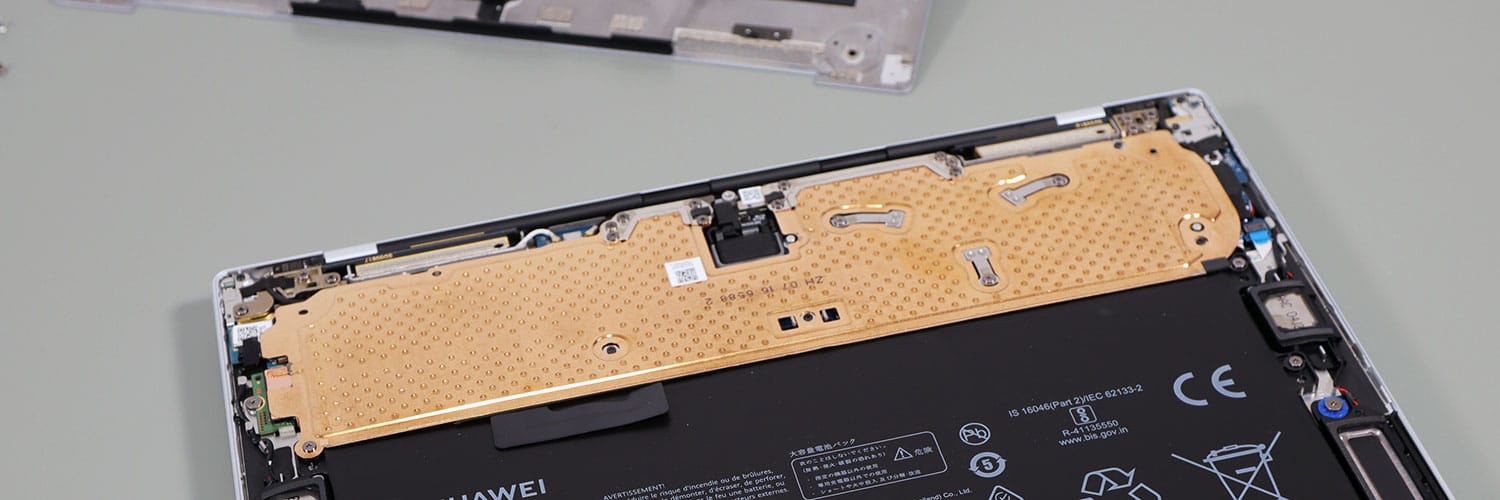


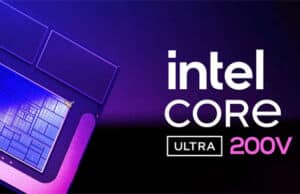

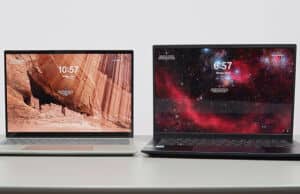

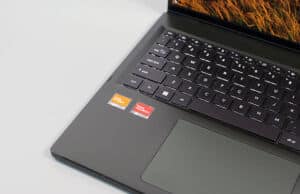
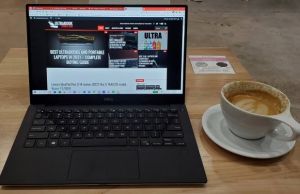
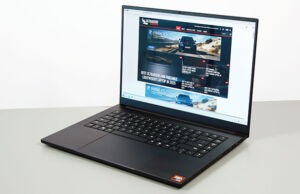
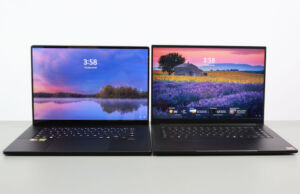
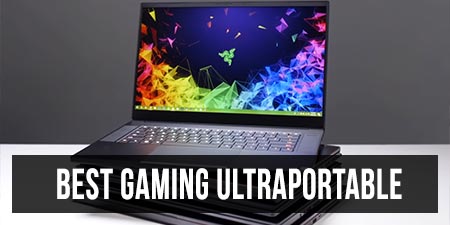
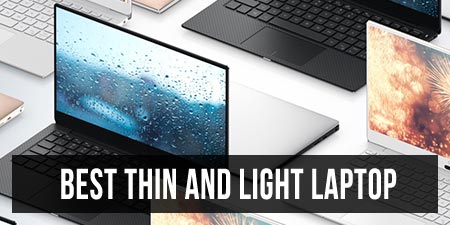
Tuong Kien Truong
April 9, 2025 at 11:40 pm
How about updating with the year of release. Many of these are so old they won't even run windows 11. Code names for CPU also really difficult to understand for most I would imagine.
Thank you.
John
May 21, 2025 at 3:19 pm
Hi, can someone help me find a non-touch, fanless OLED laptop please
James
July 14, 2025 at 1:39 pm
I'm pretty sure that the Snapdragons could do WITHOUT the fan just fine, but somehow all the manufacturers actually DO USE FANS.
Why ???
Oleg Shirochenkov
July 15, 2025 at 1:37 pm
Selective Intel and AMD CPUs have a low TDP for a passive cooling as well.
I think, it's harder to engineer a proper passive cooling system taking into account a laptop form factor nightmare: it will be thicker, heavier, case will be hotter, comparative performance tests score will be lower. Considering this page is an only comprehensive source list of passive-cooled laptops, I would assume a low level customer demand, thus, from marketing perspective, it's a lose-lose situation.
If someone expect to return to the past when CPU didn't require any cooling systems at all they would find impossible to run any modern consumer desktop operating systems with web-browsers and desktop software due to very low performance.
Klaus-Dieter Bauer
July 15, 2025 at 3:37 pm
> If someone expect to return to the past when CPU didn't require any cooling systems at all they would find impossible to run any modern consumer desktop operating systems with web-browsers and desktop software due to very low performance.
I would contest that one. The Apple iPads nominally far outperform entry level Windows laptops, so they probably would work perfectly fine as passively cooled laptops, if they just had access to the software.
Similarly, I am currently using a Surface Pro 7+ which I bought specifically because it is fanless, despite the Surface Pro 9 already being available at the time. Again, no issue whatsoever. I can even run Second Life on it reasonably well – because it has a debug setting that effectively throttles CPU and GPU by introducing a force pause after each frame, helping to avoid stuttering issues that occur when the device gets hot. Games usually don't have that option, so they suffer from stuttering despite playable *average* framerate, but that kind of "sustained high load" scenario doesn't appear with typical office work scenarios.
I do agree though that, sadly, "passively cooled" doesn't seem to be a major market criterion.
Greg
July 16, 2025 at 1:56 pm
> If someone expect to return to the past when CPU didn't require any cooling systems at all they would find impossible to run any modern consumer desktop operating systems
>I would contest that one.
And so would I, just look at the Macbook Air, which works just fine, it really can be done.
Antek Nowak
July 16, 2025 at 2:22 pm
Oleg Shirochenkov wrote:
"Selective Intel and AMD CPUs have a low TDP for a passive cooling as well."
That's exactly right , but they are nowhere to be found.
There's a whole new wave o Intel N-series CPUs with 6W TDP, but guess what…
…they are used only in normal PCs, but NOT in laptops.
It's just like laptops with Intel N100 and N200 , N305 with passive cooling never ever existed.
Chinese producer Chuwi tried, I think, but the overall quality was very low.
Andrei Girbea
July 16, 2025 at 2:34 pm
in fact, there are a few laptops built on that hardware (Alder Lake-N and the more recent Twin Lake platforms – N355 in particular), but they are all entry-level designs and fan cooled as far as I can tell. Asus ExpertBook B1, Lenovo IdeaPad Slim 3, Acer Aspire Go 17 are a few examples.
I'd argue a lower power version of Lunar Lake 200V hardware could be implemented in a premium fanless design. But it wouldn't be cheap and it wouldn't be that fast, so looks like nobody wants to make it.
Peter
July 16, 2025 at 3:18 pm
It is quite simple. When there is no air cooling the heat dissipates slower and then any computer has to be slower to get to lower temperatures. Using large heatsinks/ casing is an option (like the PCs from Cirrus7 for example). But then the computer will be large and heavy. Not an option for laptops.
The Macbook Air is relatively fast, but throttles down quickly under load for that reason. If you improve the thermal coupling and use a fan (there is a video on YT from someone who did that) it will run as fast like a MacBook Pro.
I guess most of us do not really care if there is a fan inside the laptop. At least I don't. What I care about is if it is noiseless. I have the Cirrus7 Nimbus and use it fanless normally. But during super hot days, where I had up to 30° in my room, I added two 120mm fans in front of it. That was not a strict need, but to get the PCH temperature a bit lower internally. The fans run with only 7V at a low speed (12V would be 800 rpm) and can not be heard under most real world situations. I am fine with that.
The same for a laptop. If I could buy a laptop which normally does not run the fan, but only under heavy sustained load — and would not be too loud then also — that would still be a great laptop for me. In that case I would not miss a fanless laptop much. But even those laptops are rare and it is hard to find out before when you will hear a fan and how loud it will be.
I do not want to use macOS, so still using the old Dell 7370. But this is slow. I now run it mostly with Linux Mint. Then it is usable, but still not snappy. I am now hunting for a Lenovo X13s, which seems to be the best option for a reasonable performant Win laptop. But they are hard to find in Europe.
Piotr Wolfowicz
July 16, 2025 at 5:24 pm
>>> Chinese producer Chuwi tried, I think, but the overall quality was very low.
Yes, I tried it briefly but finally in the end resigned.
However…
Now there's the All-New CHUWI GemiBook Plus K2 15.6" with Intel N150 / 16GB RAM / 512GB SSD and Windows 11 pre-installed.
Thickness 19.8 mm – go figure!
100% passive cooling, supposedly revised and "all new".
Can buy it across all Europe for peanuts.
Alvaro Rodriguez
July 17, 2025 at 1:30 pm
>>> How about updating with the year of release. Many of these are so old they won't even run windows 11.
true !… I concur.
Andrei Girbea
July 18, 2025 at 8:49 am
It's on the to do list.